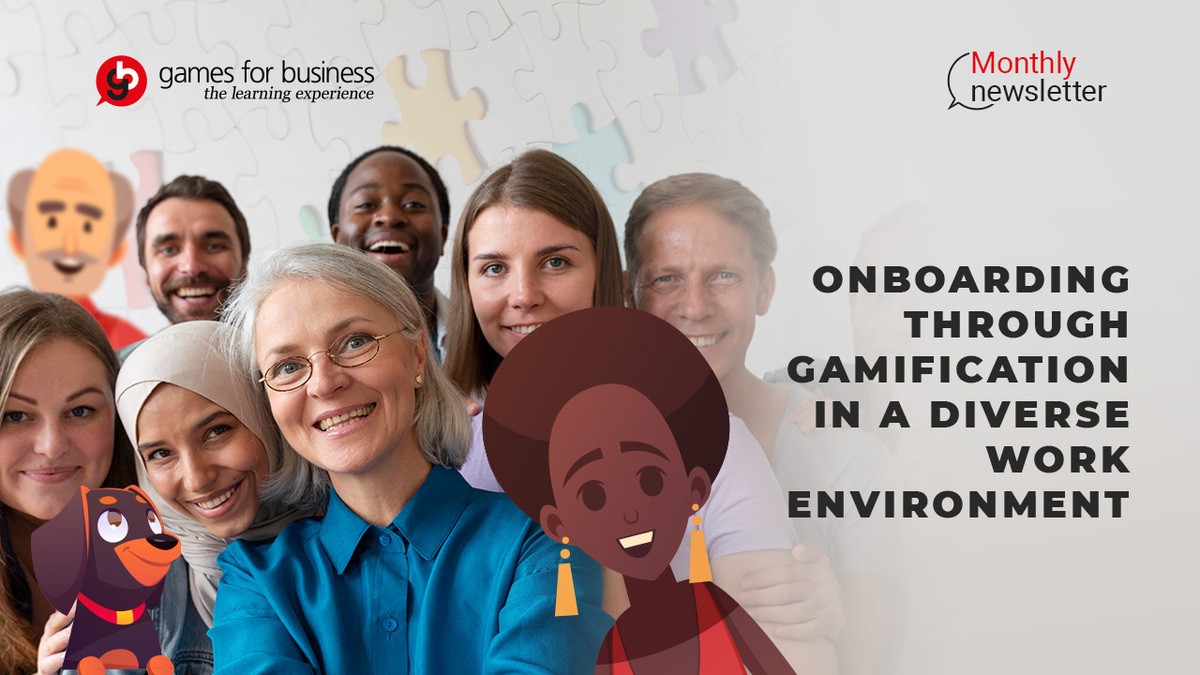
As companies embrace diversity for its benefits, they seek innovative methods to integrate new hires seamlessly into their diverse cultures. This article explores the fusion of gamification with onboarding processes within diverse work environments. By gamifying the onboarding experience, organizations enhance engagement and promote inclusivity, setting the stage for success in today's multifaceted workplaces.
The importance of diversity in the workplace
In today's globalized world, a diverse work environment is vital for innovation, creativity, and market competitiveness. Studies show that diversity not only fosters innovation, but promotes varied perspectives, empathy, and cultural understanding, enriches problem-solving and decision-making, results in broader skill sets and thus, ultimately, drives organizational success and sustainability.
Workplace diversity refers to the inclusion of individuals from different backgrounds, cultures, and perspectives within an organization. Despite its undisputable benefits, managing a diverse work environment poses challenges such as communication barriers, unconscious bias, and cultural clashes. Effective diversity management requires promoting inclusion, equity, and respect, leveraging the strengths of each individual while mitigating conflicts.
Overall, embracing diversity not only enhances employee morale and engagement but also cultivates a dynamic and adaptive organizational culture, better equipped to thrive in today's interconnected and diverse global landscape.
Definition of onboarding and its key components
The main goal of onboarding is to integrate new hires into a company, focusing on the clarity of roles and cultural alignment. It ensures that new colleagues understand their roles, the corporate culture and expectations, fostering engagement and reducing turnover.
Onboarding encompasses orientation, training, and cultural immersion. Its key components include familiarization with company policies, job responsibilities, team dynamics, and organizational culture. When executed effectively, onboarding boosts both retention and productivity.
Companies are trying new initiatives to stir up traditional employee onboarding to make the organization even more appealing to new colleagues.
One innovative approach is gamification, which applies game design elements, such as points, rewards, and challenges, to non-game contexts, enhancing corporate training by increasing engagement, motivation, and knowledge retention. It introduces competition and rewards, making learning more engaging and effective. It enhances engagement and motivation by making tasks more interactive and enjoyable.
We, at Games for Business believe that incorporating gamification into onboarding fosters a dynamic learning environment, encouraging participation and knowledge retention. By offering feedback, recognition, and a sense of achievement, gamification transforms the onboarding experience, making it more engaging, memorable, and ultimately, more effective for new hires.
Benefits of gamification in onboarding
Gamified onboarding offers several benefits.
- It boosts engagement and motivation among new hires by transforming mundane tasks into interactive challenges.
- Through gamified elements, it improves knowledge retention and learning outcomes by making information more memorable and accessible.
- It fosters teamwork and collaboration, as employees participate in shared experiences.
- Gamification addresses diverse learning styles and cultural backgrounds, catering to individual preferences and ensuring inclusivity.
Overall, gamified onboarding is a revolutionary process, not only effective but also enjoyable, setting a positive tone for new hires' integration into the company culture.
Key elements of an effective gamified onboarding program
An effective gamified onboarding program comprises the following key elements:
- Setting clear goals and objectives, outlining what new hires should achieve.
- Interactive and engaging content is crucial, making learning enjoyable and memorable.
- Incorporating feedback and reward systems provides motivation and tracks progress.
- Ensuring inclusivity and cultural sensitivity fosters a welcoming environment for all employees.
By combining these elements, a gamified onboarding program becomes a dynamic and effective tool for integrating new hires into the company culture while promoting engagement, learning, and collaboration from the start.
Best practices for gamified onboarding in a diverse environment
Best practices for gamified onboarding - and these are what we apply in our projects at Games for Business - in a diverse environment involve several strategies.
- Firstly, incorporating diverse perspectives in game design ensures that the content resonates with employees from various backgrounds.
- Using inclusive language and imagery fosters a welcoming atmosphere for all participants. Providing options for different learning styles accommodates the diverse ways individuals process information.
- Ensuring accessibility for all employees, including those with disabilities, guarantees equal opportunities for engagement.
By implementing these practices, a gamified onboarding program becomes not only effective but also respectful and inclusive, fostering a sense of belonging among all new hires.
Measuring the success of gamified onboarding programs
Measuring the success of gamified onboarding programs requires tracking key performance indicators (KPIs) such as engagement levels, completion rates, and knowledge retention.
Tools like learning management systems and surveys provide insights into effectiveness. Analyzing data allows for continuous improvement, adapting content based on employee feedback and performance metrics.
Successful case studies include Deloitte's Leadership Academy, which boosted engagement and learning outcomes through gamification, and IBM's onboarding program, which improved retention and productivity by incorporating gaming elements, or Games for Business’s own statistics displaying an impressive 18% increase in employee retention. These examples demonstrate the impact of gamified onboarding and the importance of data-driven approaches in enhancing employee integration and performance.
Conclusion
In conclusion, gamified onboarding in a diverse work environment offers numerous benefits, including increased engagement, enhanced learning outcomes, and improved inclusivity. Companies are encouraged to adopt gamification in their onboarding programs to capitalize on these advantages and foster a positive employee experience from the outset. Effective onboarding not only boosts initial satisfaction but also contributes to long-term retention and productivity. Looking ahead, workplace onboarding programs are predicted to continue evolving, integrating more gamified elements and leveraging data-driven insights for further improvement. Moreover, the role of diversity and inclusion in corporate training is expected to grow, emphasizing the importance of fostering diverse perspectives and cultural sensitivity for organizational success in the future.

